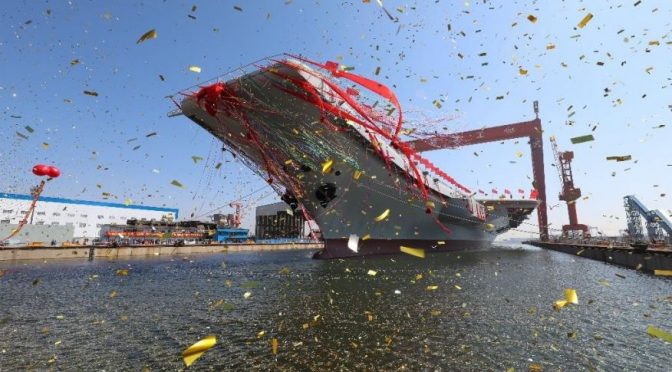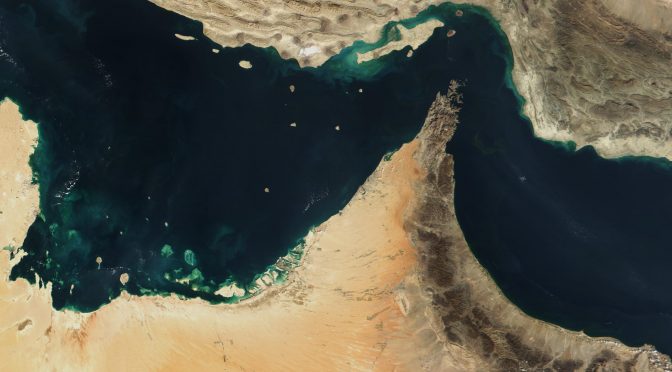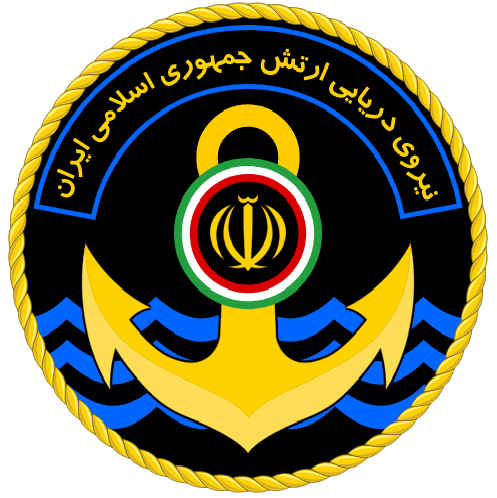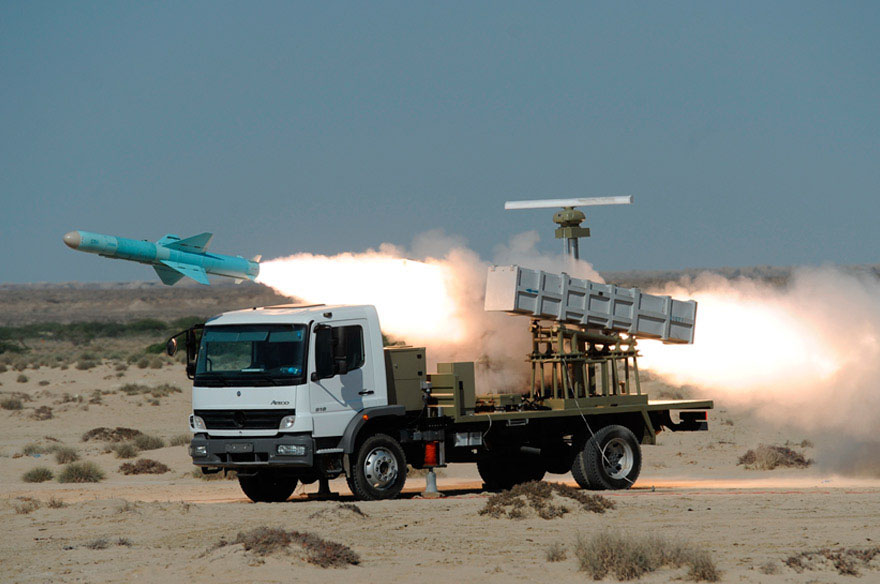By Matthew Merighi and Roger Misso
Join the latest episode of Sea Control for a conversation with Ray Mabus, former Secretary of the Navy (SECNAV), to talk about his experience leading the Navy. The conversation ranges from how a person becomes SECNAV, the challenges he faced in the role, and what he learned along the way.
Download Sea Control 136 – Being SECNAV with Ray Mabus
The transcript of the conversation between Secretary Mabus and Roger begins below. This transcript has been edited for length and clarity. Special thanks to Associate Producer Ryan Uljua for helping produce this episode.
Roger: Hi, my name is Roger Misso, and I’m pleased to bring you another edition of the Sea Control podcast from the Center for International Maritime Security. In true CIMSEC tradition, we’ll ask our distinguished guest who’s here with us to introduce himself and to tell us about himself in just a few words.
Secretary Mabus: My name is Ray Mabus, I’m the immediate past Secretary of the Navy. Longest serving since WWI, from 2009 to January 20, 2017.
Roger: Thank you Mr. Secretary, it’s an honor and we’re really privileged that you joined us here today. We’re excited to talk to you and learn about your time as SECNAV. The first question I have for you is: A lot of people know how admirals and generals are promoted; they know how senators and governors and presidents are elected. They don’t necessarily know how service secretaries and political appointees are made. I was wondering if you could tell us the story of how you became Secretary of the Navy? Is it something you asked for? Is it something that someone suggested to you? How did that come about?
Secretary Mabus: In 2007 – March of 2007 – I endorsed a relatively unknown Illinois Senator named Barack Obama for president. I then went out and did about 300 events for him. I was his most traveled surrogate, ever. And when we won the election, his transition team called me and said, “Would you like to come into the administration?” And I said, “Well, it depends on the job.”
And they said, “Do you have anything in mind?”
And I said, “I want to be Secretary of the Navy.”
And they said, “Well, okay, what’s your second choice?”
And I said, “That’s pretty much it.”
I always thought that Secretary of the Navy – because I’d been in the Navy years earlier – 37 years earlier – I was commissioned in ‘69, got out in ’72 – I always thought Secretary of the Navy was probably the best appointed job in government. I had the best elected job as Governor of Mississippi, but in terms of appointed jobs, Navy Secretary is so big, it’s got a global reach, you can have a huge impact on large numbers of people and big policies, on things that happen in the world. And so that’s why I wanted it. It came from me.
Turns out, I found out it was the most requested job in the Obama administration. And so that’s how political appointees get made.
Most people believe you have to serve, but I was the first Secretary of the Navy since the early ‘90s that had served – in any branch in the military, but particularly in the Navy. John Dalton, who had been Secretary from ‘93 to ‘97, was a Naval Academy grad, but for everybody in between, nobody had served.
Roger: You mentioned you’re the longest serving SECNAV at least since…
Secretary Mabus: WWI.
Roger: 2,803 days as secretary according to Wikipedia at least, which is iron-clad information…
Secretary Mabus: It’s always true…
Roger: As you look back on your time, what do you wish you knew at the beginning of your tenure that you didn’t know then, and conversely, what do you wish you could change at the end of your time that you realized you couldn’t?
Secretary Mabus: I’ll take the first part of your question a little differently. I thought one of the great strengths I brought to Navy is that I didn’t know what the issues were – but I also didn’t bring any baggage. So I could take a fresh look.
I think that’s valuable, not just to the Navy, but anywhere. Occasionally, you need to bring in people from completely outside that can look and see what’s important that you may [overlook] because of just the day to day stuff, looking down, making sure that you’re getting the inbox cleaned out, making sure that you’re doing the stuff you need to do that day, that you don’t step back and say, “What’s important here?”
And I thought that that was a great strength coming in. The Pentagon does a really good job of getting you ready for your confirmation hearings and your job, because for several weeks in a windowless room in the Pentagon in one hour chunks from eight in the morning until five in the afternoon, I got briefed on what the Navy and the Marine Corps and the Department of the Navy were doing around the world. And as you listen to that, issues start popping up. So I picked four.
One of the lessons I learned as governor, and in any of these leadership roles, is that you’ve got to narrow your focus. You can’t try to do everything.
So I picked People – our Sailors and Marines; Platforms – the number of ships, aircraft, and systems that we have; Power and energy – to do the things we needed to do with our ships and with our aircraft; and Partnerships – internationally and partnerships with the American people.
In terms of the second part of your question, there were some things that I wish I had started working on earlier, because it really does take a long time to get some things done. One of the things is loosening up the promotion process, allowing people to not have a traditional career path, because I think that too many times we get into this “check the box” thing, where now with big data, with analytics, with metrics, you can take somebody that comes in from a very different way, you can categorize that, you can value that. So if somebody misses their Department Head tour or something, maybe they were out doing something else that was at least as valuable, maybe more valuable to the Navy, if we can keep them in.
Along those lines, I started the Career Intermission Program so you could take up to three years off, but I do wish that I had started some of these particular personnel initiatives sooner, started them maybe three years in. But it just takes, as you know, a long, long time for some of these to come to fruition. You’ve got to go through several cycles, you’ve got to give people a heads up, you’ve got to make sure that careers aren’t harmed by people that were under the old system. Now, I think it’s going to happen and I think it is happening, but I wouldn’t change anything that I did. I might have started a couple of things earlier.
Roger: In 2,803 days you worked under four different Secretaries of Defense. Secretary Gates, Secretary Panetta, Secretary Hagel, and Secretary Carter. Did your job differ at all under those four SECDEFs, and how did their different leadership styles affect the Navy?
Secretary Mabus: First, my job didn’t change. The Navy is so big. The Department of the Navy is so big. If we were a private company, we would be the second-biggest in the country in terms of employees after Wal Mart, third-biggest in terms of assets in between Exxonmobil and Berkshire Hathaway, fifth-biggest in terms of budget authority – $170 billion budget; 900,000 people. So because you’re so big, and because the service secretaries are the operators – recruit, train, and equip – the people buying things, training people, furnishing the equipment and the people that the combatant commanders need, which is why I think the service secretary’s job, particularly Secretary of the Navy, is a far better job than SECDEF, for example. Because you are so big, [you have] so much autonomy. SECDEF and DoD writ large is more policy, more advice to the president, more that role and not the direct operator role.
Now, I’m not going to get into individual personalities here, but one thing I will say is that the lessons of leadership that I’ve learned over a career in government and the private sector is that they’re exactly true. Whether Secretary of Defense or service secretary, you’ve got to focus on a few things that you can get done. You’ve got to be willing to let go; you can’t micromanage. If you’re the smartest person in the room, you’re probably in the wrong room. You need to get good people, give fairly clear direction – which came from the president, basically – and then hold people accountable.
The only one personality thing I’ll get into is Bob Gates, when he was Secretary of Defense, before I got there. Bob Gates never raised his voice. He was, as far as I could tell, always calm. Yet he fired a Secretary of the Air Force, a Secretary of the Army, a Chief of Staff of the Air Force, and a Chief of Staff of the Army. And I think part of leadership is you don’t get heated up, you don’t yell and scream and this sort of stuff, but you do hold people accountable…that brand of leadership, that calm, steady leadership but then actually taking action. You see these people yelling all the time – ”I’d fire those people!” – but then if he actually did it? Not in terms of firing people, although I did that from time to time, but in terms of trying to be a responsible leader that had people under me, trying to give clear direction and then say, “Go do it, I will hold you accountable, but I’m not going to get in your business day in and day out.”
Roger: I think that’s a great lesson for everybody to take away, certainly, one that applies regardless of rank or position or title.
Currently Secretary Stackley is the Acting Secretary of the Navy, but we don’t have a newly appointed Secretary of the Navy yet. When that person does come along, what advice might you have for them?
Secretary Mabus: Well, first, Sean Stackley is terrific. He was there with me the entire time I was there. But he is an acquisition specialist. And I think Sean would be the first person to tell you that what he loves and what he wants to get back to is acquiring things, doing the negotiations, doing what he is unsurpassed at.
And I think the fact that it’s five months into an administration almost, and you haven’t had anybody even nominated to be Secretary of the Navy, is just terrible. The lack of direction – there was an Acting Secretary of the Navy when I came in, but he had only been acting for about six weeks. But even in that six weeks, he had decisions that he had to make. Now, BJ Penn was the Acting, and he was terrific at it. He didn’t make a decision that he thought belonged rightfully to the permanent Secretary of the Navy. He would just say, “I’m not going to do this because he may not agree with it,” which I think is right.
Sean is in the same position. He’s got to make decisions, but he doesn’t know which direction the new Secretary, whomever that may be, wants to go in. And with the confirmation process, and with the Senate schedule, even if somebody is nominated today, it’s probably going to be September or October before they’re confirmed – I mean, realistically. So you don’t know.
But I guess the things that I would say:
Number one, the things that I did in terms of the four Ps that I mentioned – People, Platforms, Power, Partnerships – I did to make us better warfighters. Because we’re going to alternative energy, fewer people are going to die. We were losing a Marine killed or wounded for every 50 convoys of fuel we brought into Afghanistan. Because of the personnel moves, opening everything to women, of repealing “Don’t Ask, Don’t Tell,” we’re stronger. A more diverse force is a much stronger force.
And don’t look at it in ideological terms. Look at it in – is it working? And is it making the Navy and Marine Corps better warfighters? Because it can be proved that all four of those things are.
Second, pick your own stuff. Every Secretary is different, and they should be. But always have that touchstone, that if it’s not making the Navy and Marine Corps better, if it’s not making them better warfighters, if it’s not making them better at their job, then why are you doing it?
The third thing is you’re going to have to keep one eye on today, because of the things that are happening today. But if you don’t keep an eye on 10 years from now, 15 years from now…The quick example I’ll give you is in 2001, the U.S. Navy had 316 ships. By 2008, seven years later, after one of the great military buildups in our history, we were down to 278. In those seven years, the Navy only put 41 ships under contract. In my seven budget years, I put 86 ships under contract, more than twice what [the previous administration] did.
Now the day I left, there were 274 ships in the fleet, because of the decisions that had been made 10, 15, 20 years earlier. We’ll get back to 308 ships, which is what we were building toward by 2021, which is not that far away – four years away. And I guarantee you, whoever the Secretary of the Navy is then, whoever the president is, will say “Look what I did! Look at this! We got to 308 ships.”
But if whoever comes in as Secretary of the Navy now doesn’t continue building ships at this high rate, doesn’t keep doing it year in year out, then the Secretary of the Navy and the president in 2030, in 2035, won’t have the fleet that they will need to have to do the things that they need to do.
It takes a long time to build a fleet. It takes a long time to reverse a decline. And even if you don’t pay attention to it every year – it won’t happen when you’re there. Nothing the next Secretary will do, even if they stay like I did almost eight years, won’t see it in terms of platforms in particular while they’re there. But you’ve got to do it. You’ve got to do it for the Navy, you’ve got to do it for the Marine Corps, and you’ve got to do it for the country.
Roger: I think there was a sign on Joe Rochefort’s desk that said: “There’s no limit to what we can do together, so long as no one cares who gets the credit.”
Secretary Mabus: Right.
Roger: That seems pretty applicable here.
We’ve talked about the Secretary of the Navy; we’ve sort of talked about the president. Do you think there are ways that the Navy can strengthen its relationship with Congress? Are there things we can do better? Different approaches?
Secretary Mabus: I think one of the main things that the Navy or any federal agency needs to do with Congress is be completely up front, completely transparent, and not try to hide the ball. Bad news doesn’t get better if somebody else finds it out first.
Engage with them a lot. I found that was one of the things that was most helpful, is getting to know members as individuals. And again, this is a pretty nonpartisan job – I mean, the military ought to be a little separate from politics and from partisanship. And so, whether somebody’s a ‘D’ on the Hill shouldn’t really matter. And you shouldn’t just talk to the people in your party regardless of which party that is. But there’s people in Congress and, number one, they want to do the right thing I think more times than not. Number two, they need information, because they’re the ones appropriating the money. You’ve got to show to them that you’re tackling fraud, abuse, and that you’re not asking for money that isn’t going to be well spent. And so I think that transparency, along with some actual substance in terms of what you’re doing, makes all the difference.
Roger: There’s a unique challenge, as you well know, between inspiring change and then managing to produce results eventually. I think you tried to tackle this especially as it related to your Innovation Vision. How do leaders do this? How did you manage the difference between inspiration – inspiring the force – and actually creating change and seeing it through to the end? And do you think, as you look back, that the Innovation Vision has been a success so far?
Secretary Mabus: I’ll answer the last one first: yes, I do. Some of the things that we’re doing now – for instance, every time we put a ship in the yard we change the light bulbs. We had a suggestion from a Chief. It saves a destroyer 20,000 gallons of fuel a year to change light bulbs to LEDs. And it’s better light. And you don’t have to change the bulbs but every seven years instead of every six months like we do today. And you don’t have to break out the scaffolds and things like hangar decks.
But I think there are several things, one is first you’ve got to come up with the idea, you’ve got to come up with the inspiration. And it has got to be clear, and you’ve got to talk about it all the time. Whatever that is, whether it’s innovation as a general thing, or whether it’s one of the specific programs I mentioned. And you’ve got to repeat it over and over again so that people know that the leadership is committed; that if they go out on a limb in their career, or in their job, they’re going to have some top cover to do that.
Second, you’ve got to get people on the deckplates, people who are actually out there, involved. And there are lots of ways to do that. We did a crowdsourcing platform in innovation, we stood up Task Force Innovation which people compete to get on. It’s a year tour, it’s going to help your career to be on it, because you work on one project, you do a deep dive for a year, and you come out with recommendations.
Three is, as a leader, when somebody recommends something or it bubbles up through this innovation process, you’ve got to fund it. You’ve got to show people that, and then you have to recognize people. And you’ve got to explain to people over and over again, not that this is a great theory, but that this is how it’s going to affect you. This is how it’s going to affect your life. This is why it’s going make you better at your job. This is why it’s going to make the Navy better warfighters, better at what they do. We’re not just doing this for drill, we’re not just doing this because it’s a great idea. We’re doing it for a purpose – and here’s that purpose. And then when somebody comes up with one of these great ideas – recognize them. Recognize them in front of their peers, recognize them to the leadership, to show people we really will listen.
Roger: Last question, you mentioned that Governor of Mississippi is your best elected job, Secretary of the Navy your best appointed job. What’s next? What’s the next job? What’s the next task for you, after having been Secretary of the Navy for so long?
Secretary Mabus: I like change. I like being an agent of change. I like to be disruptive in a good sort of way. I like building more than I like maintaining. So I’m an advisor now with Google Ventures, in terms of what comes next. I’m helping several pre-IPO companies with: How do you manage growth? How do you instill a culture? How do you keep that culture as you’re getting bigger? How do you create a narrative about what you’re up to? Because one of the things – it doesn’t matter that you’re doing the right thing if nobody knows you’re doing the right thing, particularly the people working with you. It’s not useless, but it’s not as powerful as it should be.
I just finished teaching at Harvard Law School, Harvard Business School, and Harvard Kennedy School, and that was a wonderful experience. I’m going to continue at the Business School off-and-on this fall.
But it’s what’s over the horizon, it’s what’s next, it’s what technology or what idea is going to change this country, going to change the world for the better – that’s what I want to be involved in.
I’ll end with a Navy story. I was in Asia, talking to a Head of Navy there. And he said that the difference [between] soldiers and sailors is that the Army looks down; they look at maps, they see boundaries, they see obstacles. The Navy looks out; they see the horizon, they don’t see any boundaries, they don’t see any obstacles, and they want to see what comes next. It’s a different mindset if you join the Navy or the Marines than it is if you do anything else. And I’d like to think that’s my mindset. I want to see what’s over the horizon. I want to see what comes next. I’ve got that Navy and Marine Corps curiosity and mindset.
Roger: Well that’s something we can certainly all take to heart, Mr. Secretary. It was an honor to have you join us today, and I’m really looking forward to what’s next for you, for our Navy, and for everyone in it. So thank you very much.
Secretary Mabus: Me too, thank you.
The Honorable Ray Mabus is the longest serving Secretary of the Navy since World War I, and has also served as Governor of Mississippi, Ambassador to the Kingdom of Saudi Arabia, and Chairman and CEO of Foamex.
Roger Misso is the Vice President of CIMSEC.
Matthew Merighi is the Senior Producer for Sea Control.






